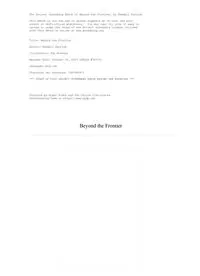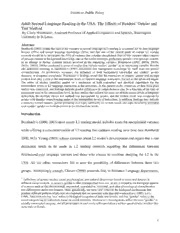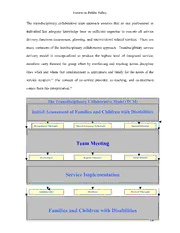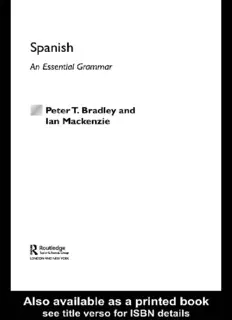
Preview Spanish: An Essential Grammar
ii 1111 2 3 4 Spanish 5 6 7 An Essential Grammar 8 9 1011 1 12111 Spanish: An Essential Grammar is a concise and user-friendly reference 3 guide to the most important aspects of Spanish. 4 It presents a fresh and accessible description of the language as it is spoken 5 both in Europe and Latin America. The book sets out the complexities of 6 Spanish in short, readable sections, and explanations are clear and free 7 from jargon. 8 9 The Grammar is the ideal reference source for the learner and user of 20111 Spanish. It is suitable for either independent study or for students in 1 schools, colleges, universities and adult classes of all types. 2 Features include: 3 4 • Clear distinctions between the essential and basic aspects of Spanish 5 grammar and those that are more complex 6 • Full use of authentic examples 7 • Simple explanations of areas that customarily pose problems for 8 English speakers 9 • Detailed contents list and index for easy access to information 30111 1 Peter T. Bradley is Emeritus Professor of Latin American History and Ian 2 Mackenzie is Senior Lecturer in Spanish, both at Newcastle University. 3 4 5 6 7 8 9 40 41111 Routledge Essential Grammars 1111 2 Essential Grammars are available for the following languages: 3 4 Chinese 5 Danish 6 Dutch 7 English 8 Finnish 9 Greek 1011 Hungarian 1 Modern Hebrew 12111 Norwegian 3 Polish 4 Portuguese 5 Spanish 6 Swedish 7 Thai 8 Urdu 9 20111 Other titles of related interest published by Routledge: 1 2 Modern Spanish Grammar: A Practical Guide, Second Edition 3 By Juan Kattán-Ibarra and Christopher J. Pountain 4 5 Modern Spanish Grammar Workbook, Second Edition 6 By Juan Kattán-Ibarra and Irene Wilkie 7 8 Colloquial Spanish 9 By Untza Otaola Alday 30111 1 Colloquial Spanish 2 2 By Untza Otaola Alday 3 4 5 6 7 8 9 40 41111 1111 2 3 4 Spanish 5 6 7 An Essential Grammar 8 9 1011 1 12111 3 4 5 Peter T. Bradley and 6 7 Ian Mackenzie 8 9 20111 1 2 3 4 5 6 7 8 9 30111 1 2 3 4 5 6 7 8 9 40 41111 1111 2 3 4 5 6 7 8 9 1011 1 First published 2004 12111 by Routledge 3 11 New Fetter Lane, London EC4P 4EE 4 Simultaneously published in the USA and Canada 5 by Routledge 29 West 35th Street, New York, NY 10001 6 7 Routledge is an imprint of the Taylor & Francis Group 8 This edition published in the Taylor & Francis e-Library, 2004. 9 © 2004 Peter T. Bradley and Ian Mackenzie 20111 All rights reserved. No part of this book may be reprinted or reproduced 1 or utilised in any form or by any electronic, mechanical, or other means, 2 now known or hereafter invented, including photocopying and recording, 3 or in any information storage or retrieval system, without permission in writing from the publishers. 4 British Library Cataloguing in Publication Data 5 A catalogue record for this book is available from the British Library 6 Library of Congress Cataloging in Publication Data 7 Bradley, Peter T., 1943– 8 Spanish: an essential grammar/Peter T. Bradley and Ian Mackenzie. 9 p. cm. – (Routledge Essential grammars) Includes index. 30111 1. Spanish language–Grammar. I. Mackenzie, I.E., 1965– II. Title. 1 III. Series: Essential grammar. 2 PC4112.B63 2004 468.2′421–dc22 2003020645 3 4 ISBN 0-203-49729-5 Master e-book ISBN 5 6 7 ISBN 0-203-57133-9 (Adobe eReader Format) 8 ISBN 0–415–28642–5 (hbk) ISBN 0–415–28643–3 (pbk) 9 40 41111 1111 2 Contents 3 4 5 6 7 8 9 1011 1 12111 Preface xiii 3 Acknowledgement xv 4 Symbols xvi 5 6 Chapter 1 The alphabet, pronunciation, stress, 7 spelling and punctuation 1 8 1.1 The alphabet 1 9 1.2 Pronunciation 2 20111 1.3 Stress and written accents 6 1 1.4 Spelling – capital letters 9 2 1.5 Punctuation 11 3 4 Chapter 2 Nouns 13 5 6 2.1 Plural forms of nouns 13 7 2.2 Gender 18 8 2.3 Collective nouns and agreement 26 9 Chapter 3 Definite and indefinite articles 27 30111 1 3.1 Forms of the articles 27 2 3.2 The definite article 29 3 3.3 The indefinite article 36 4 3.4 The neuter article lo 40 5 6 Chapter 4 Demonstrative adjectives and pronouns 43 7 4.1 Demonstrative adjectives 43 8 4.2 Masculine and feminine demonstrative pronouns 45 9 4.3 Neuter demonstrative pronouns 46 40 41111 v Chapter 5 Possessive adjectives 47 1111 Contents 2 5.1 Possessive adjectives before the noun 47 3 5.2 Possessive adjectives after the noun 48 4 5.3 Definite and neuter articles with possessives 49 5 5.4 Avoidance of ambiguity with su/sus and suyo/a/os/as 49 6 5.5 Parts of the body and personal effects 50 7 5.6 Possessive adjectives with adverbs and prepositions 50 8 Chapter 6 Adjectives 52 9 1011 6.1 Gender 52 1 6.2 Singular and plural of adjectives 55 12111 6.3 Shortening of adjectives 56 3 6.4 Position of adjectives 57 4 6.5 Translating English ‘un-’ + adjective 61 5 6.6 Verb + adjective sequences 62 6 Chapter 7 Adverbs 63 7 8 7.1 Adverbs ending in -mente 63 9 7.2 Adverbs not ending in -mente 65 20111 7.3 Adverbial phrases 68 1 7.4 Adjectives used as adverbs 69 2 3 Chapter 8 Personal pronouns 70 4 8.1 Subject pronouns 72 5 8.2 Direct and indirect object pronouns 74 6 8.3 Prepositional object pronouns 77 7 8.4 Reflexive pronouns 78 8 8.5 The position and order of personal pronouns 80 9 8.6 Use of le(s) in place of lo(s) and la(s) 82 30111 1 Chapter 9 Indefinite adjectives, pronouns and 2 adverbs 84 3 9.1 Algo 84 4 9.2 Alguien 85 5 9.3 Alguno 85 6 9.4 Uno 86 7 9.5 Mucho, poco 87 8 9.6 Bastante, suficiente 88 9 9.7 Varios 88 40 vi 9.8 Demasiado 89 41111 1111 9.9 Todo 89 Contents 2 9.10 Cualquiera 92 3 9.11 Ambos/as 93 4 9.12 Cada 93 5 9.13 Solo 94 6 9.14 Demás 94 7 9.15 Cierto 95 8 9.16 Tal, semejante 95 9 9.17 Otro 96 1011 Chapter 10 Verb forms 97 1 12111 10.1 Present indicative and present subjunctive 98 3 10.2 Imperative 112 4 10.3 Imperfect tense 114 5 10.4 Preterite tense 115 6 10.5 Imperfect subjunctive 120 7 10.6 Future and conditional tenses 121 8 10.7 Future subjunctive 121 9 10.8 Non-finite forms 122 20111 10.9 Compound tenses 124 1 10.10 Progressive or continuous tenses 126 2 3 Chapter 11 Uses of tenses 128 4 11.1 Simple tenses 128 5 11.2 Compound tenses 135 6 11.3 Progressive or continuous tenses 139 7 11.4 Expressions of time with hacer, desde and llevar 141 8 11.5 Verbs like gustar 143 9 30111 Chapter 12 The subjunctive mood 145 1 12.1 Subjunctive in subordinate queclauses 145 2 12.2 Subjunctive required by certain subordinating 3 conjunctions 153 4 12.3 Subjunctive in main clauses 157 5 12.4 The sequence of tenses – which subjunctive tense 6 to use 158 7 12.5 Additional uses of the -ra form of the imperfect 8 subjunctive 159 9 12.6 The future subjunctive 160 40 41111 vii Chapter 13 Conditional clauses 161 1111 Contents 2 13.1 Use of the subjunctive after si 161 3 13.2 Indicative tenses after si 162 4 13.3 Conditional sentences without si 164 5 Chapter 14 Reflexive verbs 165 6 7 14.1 Formation of reflexive verbs 165 8 14.2 Reflexive verbs with a reflexive meaning 166 9 14.3 Reflexive verbs with a reciprocal meaning 166 1011 14.4 Reflexive verbs with an indirect object pronoun 167 1 14.5 Se as an indefinite subject 168 12111 14.6 Reflexive verbs ‘to get/have something done’ 168 3 14.7 Verbs reflexive in form but not in meaning 168 4 14.8 Transitive verbs used reflexively with intransitive 5 meaning 169 6 14.9 Verbs of becoming 171 7 14.10 Emphatic reflexive verbs 172 8 Chapter 15 Passive constructions 176 9 20111 15.1 Serand estarwith the past participle 176 1 15.2 Alternatives to passive constructions 177 2 Chapter 16 Modal auxiliary verbs 182 3 4 16.1 Deber 182 5 16.2 Tener que 183 6 16.3 Haber 184 7 16.4 Querer 184 8 16.5 Poder 185 9 16.6 Saber 187 30111 16.7 Soler 187 1 Chapter 17 Infinitive constructions 188 2 3 17.1 Finite verb + infinitive 188 4 17.2 Prepositions + infinitive 189 5 17.3 Infinitives in impersonal constructions 194 6 17.4 An infinitive as the subject of a verb 194 7 17.5 An infinitive with an explicit subject 195 8 17.6 The infinitive as a verbal noun 196 9 40 viii 41111 1111 Chapter 18 Uses of the gerund 197 Contents 2 18.1 Basic use of the gerund 197 3 18.2 Gerund and main verb with different subjects 198 4 18.3 Gerund in place of a relative clause 198 5 18.4 Gerund with certain verbs 199 6 18.5 Cases where the gerund is not used 200 7 8 Chapter 19 Commands 202 9 19.1 Forms of the imperative 202 1011 19.2 Commands which use the present subjunctive 205 1 19.3 Alternative ways of expressing commands 207 12111 3 Chapter 20 Ser and estar 209 4 20.1 Situations which demand ser 209 5 20.2 Situations which demand estar 211 6 20.3 Ser and estar with adjectives 211 7 20.4 Ser and estar with past participles 214 8 20.5 Special uses of estar 214 9 20111 Chapter 21 Prepositions 215 1 21.1 A 215 2 21.2 Antes de, ante, delante de 220 3 21.3 Bajo, debajo de 220 4 21.4 Con 221 5 21.5 Contra, en contra de 222 6 21.6 De 222 7 21.7 Dentro de, fuera de 224 8 21.8 Desde 225 9 21.9 Detrás de, tras 225 30111 21.10 En, encima de, sobre 226 1 21.11 Enfrente de, frente a 228 2 21.12 Entre 229 3 21.13 Hacia, hasta 229 4 21.14 Según 230 5 21.15 Sin 231 6 21.16 Combinations of prepositions 231 7 21.17 Cuando and donde used as prepositions 232 8 9 40 41111 ix
The list of books you might like

The Silent Patient

What Happened to You?

Rich Dad Poor Dad

The Spanish Love Deception

Der langste Tag. Normandie 6. Juni 1944

Алгебра. 8 класс
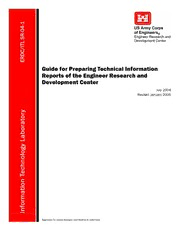
DTIC ADA445281: Guide for Preparing Technical Information Reports of the Engineer Research and Development Center

Modern Asian Studies 2006: Vol 40 Index

Svoboda-2006-33
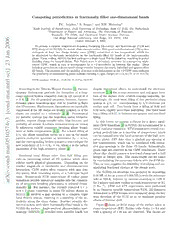
Competing periodicities in fractionally filled one-dimensional bands

Internet Networks: Wired, Wireless, and Optical Technologies
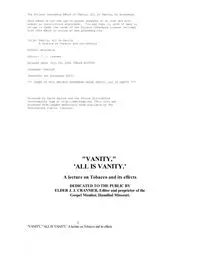
Vanity All is Vanity by J J Cranmer

Culture Through Food

Les Perles Sunnites dans les trésors de la Croyance
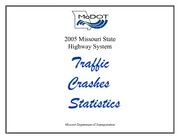
2005 Missouri State Highway System Traffic Accident Statistics

Advancements in Genetic Linkage Maps and Quantitative Trait Locations of Aquatic Farming Animals
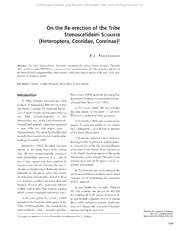
On the Re-erection of the Tribe Stenoscelideini SCHAEFER (Heteroptera, Coreidae, Coreinae)
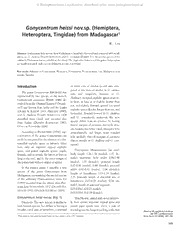
Gonycentrum heissi nov.sp. (Hemiptera, Heteroptera, Tingidae) from Madagascar
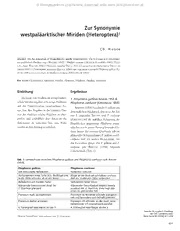
Zur Synonymie westpaläarktischer Miriden (Heteroptera)
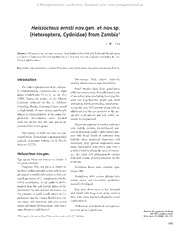
Heissocteus ernsti nov.gen. et nov.sp. (Heteroptera, Cydnidae) from Zambia
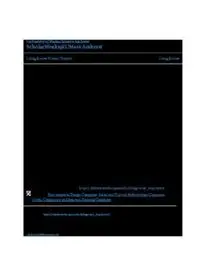
Designing a Base Station for Living Routes in Auroville, India
